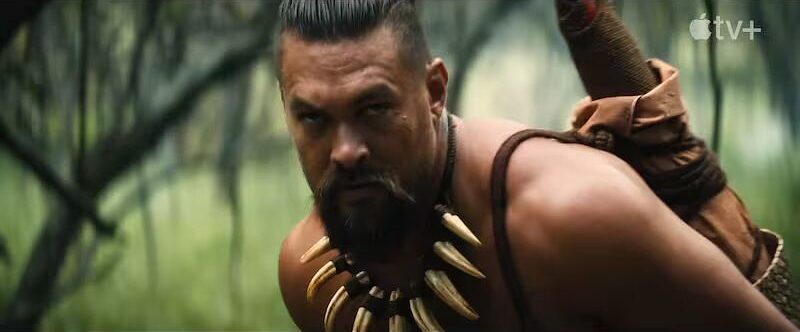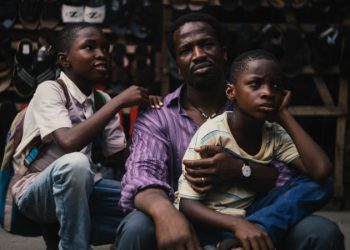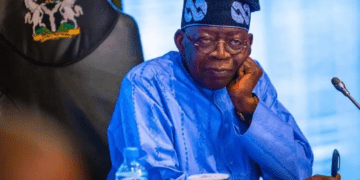Jason Momoa’s much-anticipated historical drama Chief of War has officially launched on Apple TV+, but despite its deeply Hawaiian storyline, the majority of the series was filmed not in Hawaiʻi, but in New Zealand. The decision has stirred debate among viewers and film industry insiders alike, raising questions about the state of Hawaiʻi’s own film production capabilities.
Starring Momoa as Kaʻaina, an ali’i (chief) navigating the political turbulence surrounding King Kamehameha I’s unification of the Hawaiian Islands in the 19th century, Chief of War boasts an all-star cast that blends Hawaiian and New Zealand talent. Notable names include Temuera Morrison, Cliff Curtis, Luciane Buchanan, Kaina Makua, Brandon Finn, and Moses Goods.
The series, co-created by Momoa and long-time collaborator Thomas Pa’a Sibbett, has been hailed as a landmark for Native Hawaiian storytelling. With a reported budget of US$340 million, it’s among the most expensive television productions ever made.
While Hawaiʻi is often the backdrop for major TV shows; think Lost, Magnum P.I., and Hawaii Five-O-Chief of War stands apart by centering Kānaka Maoli (Native Hawaiian) perspectives. The show embodies the Indigenous concept of “Ea o Moʻolelo”, or story sovereignty, which promotes the right of native communities to tell their own histories, in their own voice and cultural context.

The show dramatizes the moʻolelo (history) of King Kamehameha I’s military and political campaigns that culminated in the establishment of the Hawaiian Kingdom in 1810. Until that unification, each island was independently governed by powerful high chiefs (aliʻi nui).
So Why Was It Shot in New Zealand?
Despite its deep cultural ties to Hawaiʻi, the production was filmed for just one month in the islands. The majority of the series was shot across scenic locations in New Zealand, with crews largely composed of non-Hawaiians.
Momoa, who has publicly expressed interest in acquiring New Zealand citizenship, attributed the decision to challenges within the Hawaiian film industry rather than a lack of cultural commitment. In fact, the move highlights the troubled state of film production in Hawaiʻi, compared to New Zealand’s well-supported, government-backed screen sector.
Although Hawaiʻi has historically been a sought-after location for Hollywood productions, recent developments have rendered the industry fragile. High production costs, limited local infrastructure, and a capped tax incentive system have discouraged filmmakers.
Hawaiʻi currently offers a 22–27% tax rebate, significantly lower than incentives provided by other U.S. states such as Louisiana (40%) and Georgia (30%). Moreover, the state imposes an annual cap of US$50 million on total rebates, limiting larger-scale productions like Chief of War.
Unlike New Zealand and Australia, which offer targeted grants for Indigenous filmmakers, Hawaiʻi lacks a robust support system. Indigenous storytellers in Hawaiʻi have limited access to public funding, and recent federal budget cuts under former President Donald Trump further destabilized what little support remained.
Additionally, the high cost of lodging, shipping equipment, and flying in mainland crew has made shooting in Hawaiʻi an expensive logistical challenge.
By contrast, New Zealand has cultivated a globally respected film industry, known for producing mega-hits like The Lord of the Rings and Avatar. With tax rebates of 20-25% for international productions and 40% for local projects, along with decades of government investment in Māori cinema, the country has become a model for how to build a sustainable and inclusive screen industry.
New Zealand’s currency exchange rate with the U.S. dollar also plays a strategic role, making American productions more cost-effective to produce.
However, it’s worth noting that New Zealand’s industry has its own pitfalls. For example, labor protections for local film workers have been weakened over the years, especially in comparison to U.S. union standards.
A Possible Turning Point for Hawaiʻi
The absence of large-scale local productions has hit Hawaiʻi’s entertainment workforce hard. With film and television production grinding to a near halt, many workers are now questioning the viability of long-term careers in the state’s screen sector.
Nevertheless, the success of Chief of War may serve as a wake-up call for Hawaiian policymakers. If local leaders revisit their tax credit laws and invest in Indigenous storytelling, Hawaiʻi could regain its footing in the global screen landscape.
There’s even speculation that a second season of

of War could bring production fully back to the islands; if the right infrastructure and funding support are put in place.
As Indigenous representation continues to grow in global media, Chief of War stands as a powerful example of cultural storytelling. But where it’s told and who gets to tell it; remains a crucial issue for Hawaiʻi’s creative future.




























